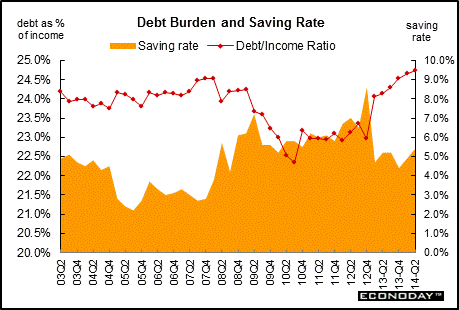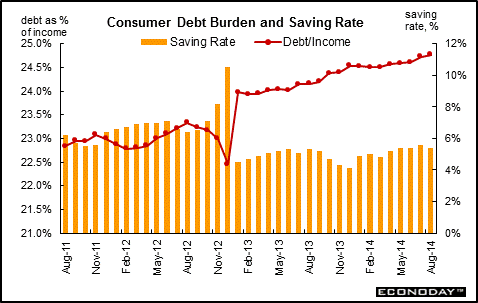
|
Long Term Perspective The debt-to-income ratio peaked most recently in the first quarter of 2005, at the same time that the personal saving rate plunged in response to increased light truck purchases. Also, home equity lines of credit were still in vogue as the housing crunch had not yet set in. Improvement has been erratic since 2005. But deleveraging accelerated during 2009, 2010 and 2011 as consumers tucked their credit cards away and banks have both reduced credit limits and continued sizeable charge-offs. But in latter 2011, 2012, 2013, and into 2014 there were signs that the consumer credit situation had improved. But there were some technicalities regarding the increased debt-to-income ratio.
Short Term Perspective Late in 2011 and in 2012, consumers appeared to be willing to take on a little more debt as the labor market stabilized and the aging auto fleet boosted auto demand. Debt rose in late 2011 through early 2014—primarily due to improved auto sales and due to increased student loans going into the government definition of consumer debt. The federal government has been purchasing student loans from private sector lenders, boosting the nonrevolving credit portion of consumer debt. Auto loans have been a positive. But revolving credit (mainly credit cards) has been sluggish.
The personal saving rate spiked in December 2012 due to accelerated dividend payments and other types of income to partially beat the rise in income tax rates (at high incomes) and in payroll taxes. In early 2013, the saving rate softened on sluggishness in income, notably coming off the December effect. The rate slipped in early 2014 as spending outstripped income growth. In mid-2014, income outpaced spending.
|
|||||||
| Legal Notices | ©Copyright 1998-2024 Econoday, Inc. |
powered by
![[Econoday]](images/logo.gif)
![[Apple App Store]](/images/AppleAppStore.png) ![[Econoday on Kindle]](/images/kindle.jpg) 
|
||||||

